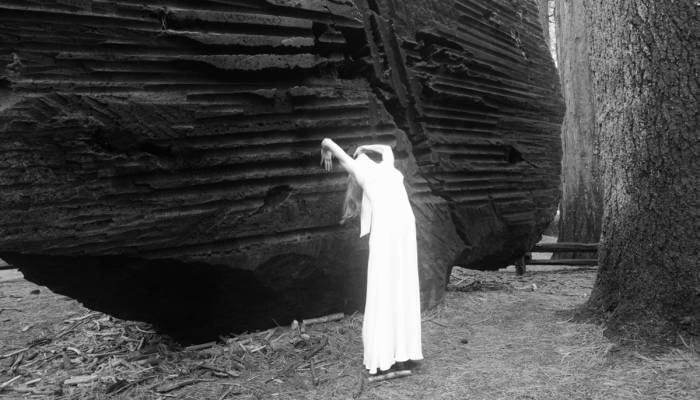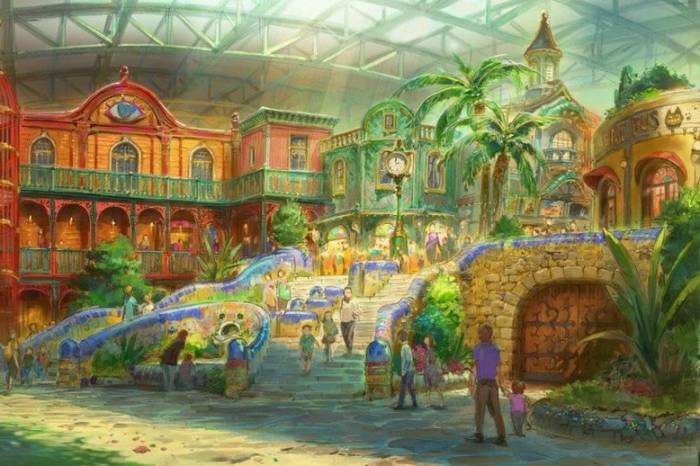Atlantic, Submerged Beneath Legends
The historical truth about a place or an event does not lessen a story, but rather allows us more freedom to imagine it.
A legend is a story told too many times by too many people down the ages: like waves on a sandy beach, each successive version of the story adds or takes away, corrects or brings in new information, which is why finding out the beginning of a legend makes us want to see the original face of the beach. The waters that swept the mythical Atlantis (which means ‘island of Atlas,’ and in whose honor the Atlantic Ocean was named) under the sea were not able to sink the desires of philosophers, writers and archeologists to find new indications and evidence that would reinforce the beauty of the story.

The version of the story that many begin with is that of Plato: Critias, a disciple of Socrates, listened to his grandfather tell the fantastical story of a powerful island known in ancient times as Atlantis and which, Poseidon, the god of the seas, had divided into ten kingdoms to give to the ten children he had fathered with Cleito. Over time, those kingdoms prospered within a geography that Critias described s rich in all kinds of harvest good for humans: rich for grazing cattle and with clean waters overflowing with fish. Plato’s argument in the dialog that correspond to Critias y Timaeus are intended to describe an ideal social organization in which there is harmony between humankind and the gods, and with a government based on cooperation with other kingdoms and which is forbidden from being hostile to its neighbors; the description of an ideal city or society was created by Plato in another of his Dialogues like The Republic, which, along with Critias, can be described as utopian in at least two ways: 1) in the sense that they describe a means of efficient government necessarily different to the one they live in; 2) that the sense of history consists of demonstrating precisely that the ideal organization is impossible to find, as the perfect society is always utopian: “Absent in space,” or in its strict etymological sense, “without place.”
The dialog between Socrates and Critias is also “without place,” abruptly interrupted without the fate of the legendary Atlantis having been referred to. Critics of Plato such as Pliny the Elder and Eustathius reinforced the truth of the story of the grandfather of Critias (which is really a family anecdote, more than a legend of something that, even in Plato’s day, had happened thousand of years previously), finding Egyptian obelisks that carried the hidden knowledge of the people of Atlantis, a custom that people gleefully adopted in the following centuries: creating an historical denouement by linking the ruins of Atlantis with the place where it is supposed that the island was flooded.

But the fact that a place does not exist, because it is utopian, does not mean that it cannot be searched for. For millennia, explorers of the depths have tried to locate the mythical Atlantis, looking for it in the Caribbean, the Yucatán peninsula, the American continent, Ireland, the Azores, Greenland, Africa, Sicily and the Antarctic. One strong contender, both due to its geographical location and its historical position, is the Greek island of Crete. In Plato’s era the memory of the powerful King Minos and his lineage were of mythical proportions, but from an historical point of view Crete offered the perfect example of the decline of a prolific and powerful society. Sometime around the year 1627 B.C., more than a millennia before the era of Plato, a volcanic eruption similar to that of Krakatoa in the 19th century put an end to a large part of Crete, and changed the face of the Aegean Sea forever, a sea crossed by the ships of the Homeric heroes.
In early 2015, the National Geographic Society located Atlantis in one of the swamps close to the port of Doñana, northwest of Cadiz in Spain, and geologists and archeologists from various countries met under the leadership of Richard Freund to weigh up theories and compare evidence; in short, to once again tell each other the story comprised of concentric circles that allow for the force of the seas to be moderated to protect it from potential invaders; a city built under the ordering principles that Plato derived from the treatise with the idea (eidos, the shape of things), and which reproduced in the character of its governors and in the construction of its institutions a paradigm of cosmic perfection. An imaginary city that comes to life as a legend – when we read or discuss or once again tell the same story.
Related Articles
When ancient rituals became religion
The emergence of religions irreversibly changed the history of humanity. It’s therefore essential to ask when and how did ancient peoples’ rituals become organized systems of thought, each with their
Larung Gar, the valley that is home to thousands of Buddhist monks
If we think about the monastic life it is very probable that we think about solitude, seclusion, silence and a few other qualities whose common denominator is the appropriate isolation for mediation
Dialogue with the Dalai Lama on science and spirituality
The Dalai Lama has been interested in science since he was a child. Over the years he’s visited many laboratories and has attended conferences that discuss consciousness from the scientific point of
A New Year's resolution for the earth
Worrisome quantities of waste are generated by human populations. Especially in cities, these have reached unprecedented and alarming levels. A largely uncontrolled practice, it affects everything on
The Dark Mountain Project: or how literature can confront ecocide
One impulse from a vernal wood May teach you more of man, Of moral evil and of good, Than all the sages can. Wordsworth, “The Tables Turned” (fragment) Words are elementary. The only reason we can
Are there no women in the history of philosophy?
Do only men philosophize? This could sound like a silly question, but if we quickly review the names of philosophers, from Aristotle to Slavoj Žižek, it would appear to be an exercise that is
Things that are about to disappear: photography as environmental conservation
Cristina Mittermeier is the founder of the International League of Conservationist Photography (iLCP), and is at the front of a modern movement to use photography with environmental purposes. Her work
Architecture And Music; An Affair That Acts On The Matter
A composition is like a house you can walk around in. — John Cage Perhaps music, more than the art of sound, is the art of time. That’s why its communion with space, and architecture, is so often so
Psycho-geography (On The Ritual Casting of a City)
Mrs. Dalloway walked down the streets of London guided by an “internal tide” that made her stop somewhere, enter a store, turn at the corner and continue her journey, as if she were adrift. La dérive
A Theme Park Inspired by Hayao Miyazaki is About to Open …
One of animation’s most spectacular exponents, Hayao Miyazaki, is the artist who transformed the direction of traditional animation forever.










